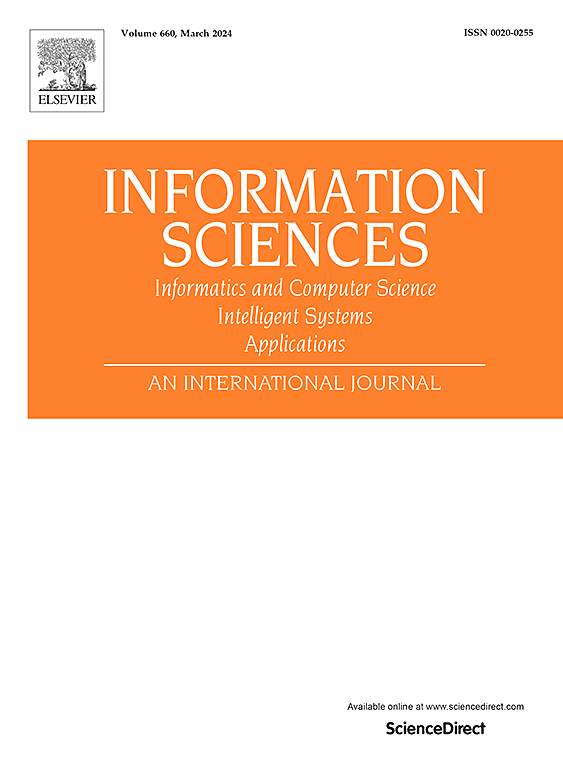DPSN-STHA: A dynamic perception model of similar nodes with spatial-temporal heterogeneity attention for traffic flow forecasting
IF 8.1
1区 计算机科学
0 COMPUTER SCIENCE, INFORMATION SYSTEMS
引用次数: 0
Abstract
Precisely capturing spatial-temporal feature correlations represents an effective approach for improving the traffic flow prediction performance. However, accurate capturing of spatial-temporal features in traffic systems faces certain challenges, such as long-range correlations and node heterogeneity. To overcome these issues, this paper introduces a novel traffic flow prediction model that incorporates spatial-temporal heterogeneous attention, allowing for dynamic perception of similar nodes. In the proposed model, a filter network dynamic parameter memory generator is used for real-time parameter adjustment, which assigns greater weights to nodes with higher similarity to mitigate spatial-temporal heterogeneity. In addition, a similarity-based node computation method, which uses the Wasserstein distance, is introduced to construct a spatial-temporal association matrix, allowing for the dynamic capturing of long-range correlations between nodes. The model's efficacy is validated through experiments on four publicly available traffic datasets. Results show that the proposed model consistently outperforms the best baselines in predictive accuracy. Furthermore, this study examines factors such as training data size, dimensionality, the number of attention heads, and the threshold of the spatial-temporal association matrix, and includes an ablation study to evaluate the model's overall performance.
基于时空异质性的交通流预测相似节点动态感知模型
准确捕捉时空特征相关性是提高交通流预测性能的有效途径。然而,交通系统时空特征的准确捕获面临着远程相关性和节点异质性等挑战。为了克服这些问题,本文引入了一种新的交通流预测模型,该模型结合了时空异质性注意力,允许对相似节点进行动态感知。该模型采用滤波网络动态参数记忆生成器进行实时参数调整,对相似度较高的节点赋予更大的权重,以减轻时空异质性。此外,引入了一种基于相似性的节点计算方法,该方法使用Wasserstein距离来构建时空关联矩阵,允许动态捕获节点之间的远程相关性。通过在四个公开的交通数据集上的实验,验证了该模型的有效性。结果表明,该模型在预测精度上始终优于最佳基线。此外,本研究考察了训练数据大小、维度、注意头数和时空关联矩阵阈值等因素,并包括一个消融研究来评估模型的整体性能。
本文章由计算机程序翻译,如有差异,请以英文原文为准。
求助全文
约1分钟内获得全文
求助全文
来源期刊

Information Sciences
工程技术-计算机:信息系统
CiteScore
14.00
自引率
17.30%
发文量
1322
审稿时长
10.4 months
期刊介绍:
Informatics and Computer Science Intelligent Systems Applications is an esteemed international journal that focuses on publishing original and creative research findings in the field of information sciences. We also feature a limited number of timely tutorial and surveying contributions.
Our journal aims to cater to a diverse audience, including researchers, developers, managers, strategic planners, graduate students, and anyone interested in staying up-to-date with cutting-edge research in information science, knowledge engineering, and intelligent systems. While readers are expected to share a common interest in information science, they come from varying backgrounds such as engineering, mathematics, statistics, physics, computer science, cell biology, molecular biology, management science, cognitive science, neurobiology, behavioral sciences, and biochemistry.
 求助内容:
求助内容: 应助结果提醒方式:
应助结果提醒方式:


